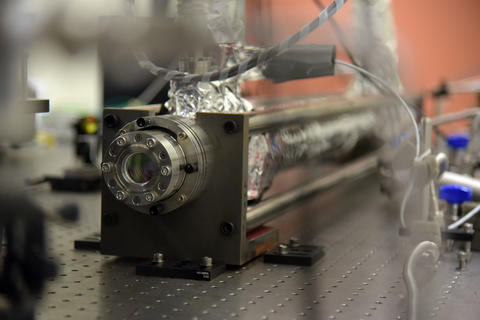
Mirror, mirror in the chamber, how can we get light to reflect from you better?
At NIST, we have researchers using mirrors to reflect light in an enclosed chamber with a gas sample. Our team can determine how much of a particular gas exists in the sample (say, a greenhouse gas from the atmosphere or impurities in a gas used in semiconductor manufacturing) based on how much light gets absorbed and emitted by its molecules.
The longer we can beam light at the molecules, the better the measurements will be. Our team uses mirrors on either end of the chamber to bounce the light back and forth so that it hits the sample for a longer time.
But each time light hits a mirror’s surface, not all of it reflects. We lose a little of the much-needed light intensity for measuring minuscule gas samples.
Now, in a collaboration with Thorlabs Crystalline Solutions, the University of Vienna and the University of Neuchâtel, there’s a solution. It’s a coating with a crystal structure that produces a perfectly even layer of material atop the mirror’s surface. This even layer can reflect more of the light than before.
During the past five years, our colleagues from around the world came together to produce the crystalline surface, and our researchers tested it out. The NIST team used precise techniques to measure the amount of light in the mid-infrared that gets lost in their process.
Read the news release from the University of Vienna and find all the details in the full paper.
Follow us on social media for more like this from all across NIST!

